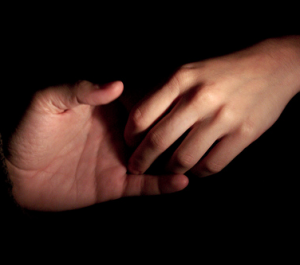Moving From Racial Hate Crimes To Forgiveness, Tolerance
 Like other crimes, hate crimes leave tracks that cannot be erased, not only for the families of the victims of these crimes, but also in the communities where they live. Such crimes sow the seeds of fear, of being attacked for “being” one way or another .
Like other crimes, hate crimes leave tracks that cannot be erased, not only for the families of the victims of these crimes, but also in the communities where they live. Such crimes sow the seeds of fear, of being attacked for “being” one way or another .
The trend of recent years has been the steady increase in such crimes, illustrating that racial tensions exist between different groups that come together in this multiethnic society. One example is the fighting between Latinos and African-Americans, and between Latinos and Armenians.
“Raul was very good, quiet and studious. He had just a few days to turn 18 and did not deserve to die this way,” said Leticia Aguirre, the mother of one boy who died in such a crime. “The day of his birthday we were burying him. This crime has shattered our lives.”
It was the tensions between gangs of Latinos and Armenians in Glendale, a suburb northeast of Los Angeles, that resulted in the death of Raul Aguirre, a 17-year-old who was stabbed by two Armenian teenagers when he tired to defend another Latino boy who was being attacked near his school.
Raul did not belong to any gang. He worked and studied, and his passion was baseball. “It was May 5 and I had been at his school party; then suddenly we were in the hospital hoping he would survive the two stab wounds to the back and two more received in the heart,” says Leticia.
Such crimes are often not reported to authorities. Victims of such crimes mostly opt for silence. Under the impression that these crimes are not properly prosecuted, their perpetrators are not brought to justice they go unpunished and anonymous.
Seeking Tolerance and Forgiveness
But it wasn’t like that for the Aguirre family, who decided to bring to justice those responsible for the death of Raul in the incident because there were numerous witnesses. And while lawyers for the two young Armenians, who were then 15 and 18 years old, used delay tactics, five years after the crime they were sentenced to 18 and 25 years in prison.
“What I have lived I do not wish for the parents of the murderers of my son, who also suffer. When I met them did not understand why I had done what they did to my son — they never even knew him, he was just different. It was incomprehensible. The day of sentencing one of them wrote me a letter read it in court asking for forgiveness. Since then we write and he calls me me from prison.”
“We must learn to forgive and tolerate. This boy has graduated from high school and has promised that the day out of jail will go to visit the tomb of Raul. As it happens her mother accompanied me to visit my son.That is tolerance and forgiveness. ”
Over the years, Leticia, with the support of family and local activists, has advocated this message of tolerance in the midst of a community whose tensions have intensified.
Tolerance is respect, acceptance and appreciation of the rich diversity of cultures in our world, our forms of expression and ways of being human. It is fostered by knowledge, openness, communication and freedom of thought, conscience and religion. Tolerance is harmony in difference. Not only is it a moral duty, but also a political and legal requirement. Tolerance, the virtue that makes peace possible, contributes to replace the culture of war by a culture of peace. [Article 1.1 of the Declaration of Principles on Tolerance, proclaimed and signed by the Member States of UNESCO on November 16, 1995] (2009)
Expediente Rojo Project (Code Red), is a non-profit organization dedicated to providing the Latino community with information about crime in their communities. Visit Expediente Rojo’s website, follow them on Facebook or on Twitter @Expediente_Rojo.
[Photo By Josep Ma. Rasell]
